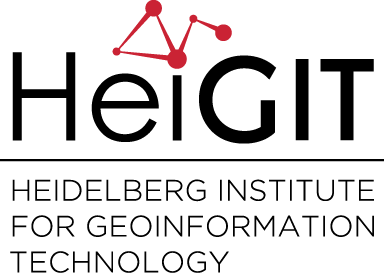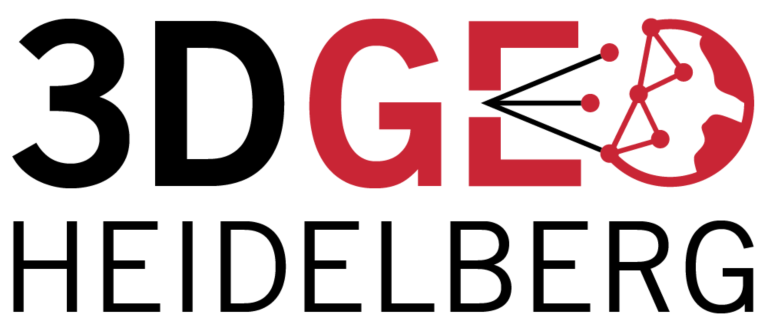Author: GIScience HD
-
FOSS4G Bonn
Last week, the worldwide FOSS4G (Free and Open Source Software for Geospatial) conference took place in Bonn. The GIScience department was represented by Jakob Miksch. He presented a poster and gave a presentation with the topic “Routing through Open Spaces”. Before and after the conference a code sprint took place. More than 100 developer from…
-
Defining Fitness-for-Use for Crowdsourced Points of Interest (POI)
Due to the advent of Volunteered Geographic Information (VGI), large datasets of user-generated Points of Interest (POI) are now available. As with all VGI, however, there is uncertainty concerning data quality and fitness-for-use. Currently, the task of evaluating fitness-for-use of POI is left to the data user, with no guidance framework being available which is…
-
Job: Research Coordinator Geoinformation Technology, Heidelberg
REMINDER: Open Position: Senior Wissenschaftliche (r) Mitarbeiter/-in Geoinformatik (100%) Research Coordinator Geoinformation Technology VGI Services, LBS & Big Spatial Analytics Aufbau des Heidelberg Institute for Geoinformation Technology (HeiGIT) In der Abteilung Geoinformatik der Universität Heidelberg ist baldmöglichst eine Stelle für eine(n) motivierte(n) und erfahrene(n) wissenschaftl. Mitarbeiter/-in (100%, TV-L), idealerweise promoviert, zu besetzen. Zur Förderung von…
-
Using participatory geographic approaches for urban flood risk in Santiago de Chile: Insights from a governance analysis
Studies based on information acquired by participative geographic approaches have sought to cope with emergency situations and disasters such as floods. However, the impact of these approaches to flood risk governance systems in order to understand these types of events as a complete risk cycle is still not clear. In a recent paper, we analyse…
-
Radio Interview on activities @ Heidelberg Institute for Geoinformation Technology
recently Prof. Zipf gave an radio interview in German about some of the activities of the GIScience Research Group and the Heidelberg Institute for Geoinformation Technologies (HeiGIT); which is currently being established with core funding by the Klaus Tschira Stiftung Heidelberg. The short radio broadcast (mp3) covers e.g. work on improving and generating Geographic Information…
-
MapSwipe App for humanitarian mapping featured in Product Hunt today
today MapSwipe is featured in “Product Hunt”, a kind of reddit for products. https://www.producthunt.com/tech/mapswipe Learn more about the smartphone App that helps you to put a family on the map. It is so simple even children can use it but helps humanitarian organisations like the Red Cross and Doctors without Borders to better plan and…
-
OpenFloodRiskMap Online combines Critical Infrastructure from OSM with Emergency Routing
some time ago we deployed OpenFloodRiskMap (OFRM) at http://ofrm.geog.uni-heidelberg.de/ OpenFloodRiskMap (OFRM) is a prototype web application to assist decision makers in developing alarm and operation plans for flood risk management. The OFRM hereby provides support in accessing critical infrastructure (CI) information in the OpenStreetMap (OSM) data base and to furthermore add this information to an…
-
GeoInformatics Summer School at Wuhan University, China
In June, the State Key laboratory of Information Engineering and Surveying, Mapping and Remote Sensing (LIESMARS, http://www.lmars.whu.edu.cn/en/) launched their 2016 Geoinformatics Summer School at Wuhan University, China. This year’s courses treated topics ranging from technologies and paradigms for web mapping and online GIS to night-time remote sensing and GNSS. Participants from Africa, Europe and Asia,…
-
Tomorrow Semester closing Mapathon and talk by Kerstin Meyer on the use of OSM data in Togo
Dear Mapping-Enthusiasts, before the start of the semester break, we would like to take the chance to round the semester up with a “SPECIAL” Mapping event at Heidelberg University Many of you have supported the Mapping for Togo during our last Mapathon or/ and the GIS tutorial. This data was collected for the use by…
-
OpenRouteService is going Global – including the Americas
OpenRouteService (ORS) was the first routing service based on OpenStreetMap in early 2008 that covered whole countries. ORS also introduced international pedestrian and bicycle routing, even before e.g. Google was offering this. Since 2008 OpenRouteService has been constantly available online and over the years it evolved from covering individual states in the beginning, to the…


